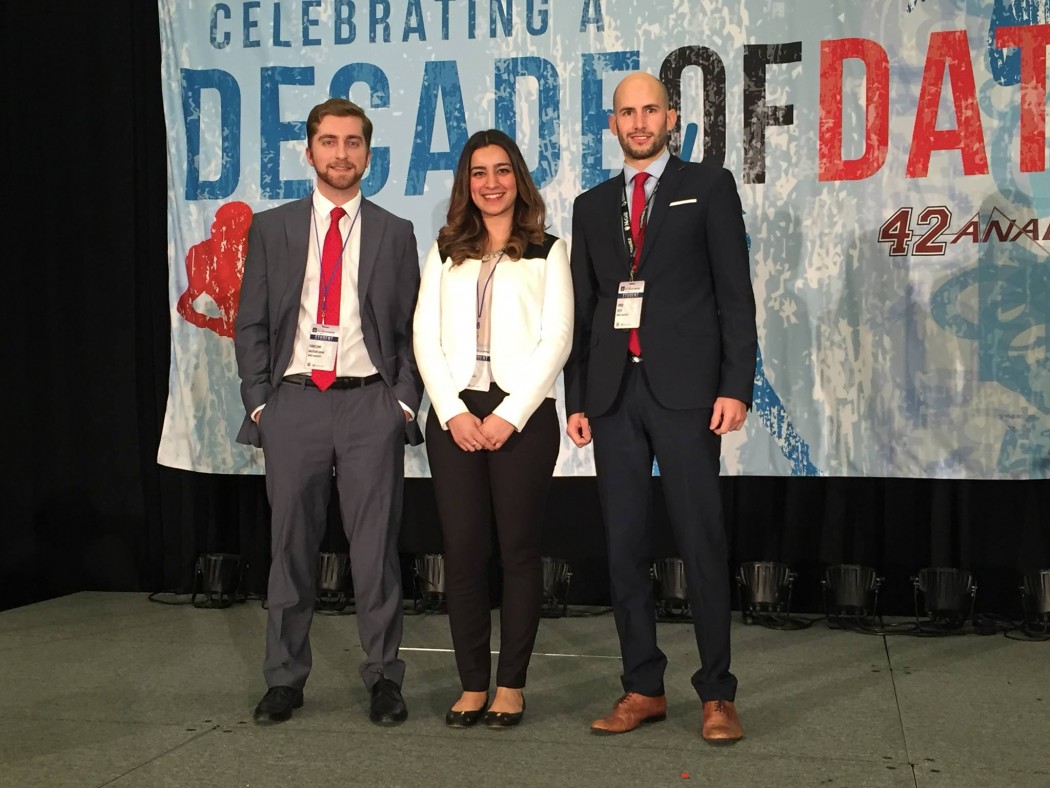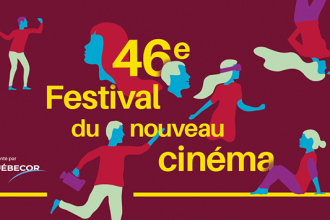The final rounds of the annual MIT Sloan Sports Analytics Case Competition were held on the weekend of March 11th, 2016 in Boston, Massachusetts. This unique competition attracts some of the top MBA students from across North America and business magnates within the sports entertainment and analytics sectors to discuss the most pressing issues facing the respective industries.
The event focused on how Ticketmaster (who sponsored the event) could enhance their partnership with the NBA through the optimization of season ticket packages. McGill’s Desautel team, led by MBA students Jorge Tatto, Deepti Kaul, and Christian Mathews-Gagne, prevailed over 43 other groups and placed first in the overall competition.
The Bull & Bear caught up with one of the team’s members, Jorge Tatto, to hear more about his team’s victory.
1. What made you and your colleagues want to attend the MIT Sloan Sports Analytics First Pitch Case Competition and how did you assemble your team?
Jorge: “I first found out about the competition a couple years ago and have always wanted to attend. It’s one of the biggest within the sports entertainment industry – 3,900 people attended this year. One of my classmates recommended my teammate Christian, who had knowledge of the NBA. He then introduced me to Deepti, who’s outside perspective contributed to the remarkable success of our team.”
2. This year, the proposed case focused on how Ticketmaster could improve its partnership with the NBA through technological advancements and season ticket packages. How did your team address this case?
Jorge: “We outlined five recommendations for Ticketmaster’s current business platform that would strengthen their partnership with the NBA. The first focused on loyalty programs for better fan engagement, the second suggested an increase in their social media presence, the third was a mobile auctioning platform, the fourth a reimagining of the current NBA season ticket model, and finally a re-marketing of NBA season tickets to appeal to a younger generation of fans.
We took some original and inventive routes to get to these five proposals – for the social media program, we suggested looking into unexplored avenues such as Spotify and other mobile applications. Our mobile auctioning platform would directly connect prospective fans to current season ticket holders who were looking to sell off-season tickets, as well as implement aspects of the E-Sports business model and virtual reality applications within the NBA’ future expansion plans. A new NBA season ticket model would also capture dynamic pricing within Ticketmaster’s proprietary secondary ticket exchange. And as for marketing to a younger generation – which we are apart of – we advocated for a more flexible season ticket model that would allow individuals to remain season ticket holders without having to commit to all forty-one home games per season.”
3. In your opinion, what gave your team such a competitive advantage?
Jorge: “Honestly, our overall execution definitely gave us a leg up – our presentation was so aesthetically captivating. We made sure that our exposition struck a cohesive balance of delivering necessary information while also remaining visually pleasing. Because of the technical nature of the presentation, we made sure that everything flowed naturally and was always connected. The balance we achieved definitely struck a chord with both the audience and judges.”
4. What are your team’s future aspirations after winning this competition? Are you interested in pursuing a career within the sports analytics industry?
Jorge: “Yes, I am very interested in pursuing a career in the sports analytics industry. I really want to try to leverage our team’s win to explore future career avenues. My colleague Christian is also interested in pursuing an internship within this field, although it is not his primary interest, and Deepti has used this opportunity to network with industry professionals, even though she already has an interest in pursuing a career in marketing.
The sports entertainment and analytics industries are both very niche, and are therefore, quite hard to crack without an established business network. Quite often, it is easier for a company to promote inside rather than hiring externally. Fortunately, the grand prize of this competition means that our team will fly out Hollywood to give our presentation in front of Ticketmaster’s clients at their annual sports summit. The potential to meet with industry professionals from every league makes this opportunity truly invaluable.”
5. Where do you see the nascent field of sports analytics heading to in the coming years? Specifically, what future trends do you see emerging within the industry?
Jorge: “I think one of the main problems in the sports analytics sector stems from the seemingly infinite amount of data that can now be quantified. There is just no way of knowing if you are properly applying and using all the metrics you have collected to their fullest capabilities. In the coming years I think there will be a lot of start-ups emerging that will attempt to harness the power of big data analytics and software to fully process the vast amounts of information at our disposal.
The growth of this conference attests to how big the industry has grown since its initial inception ten years ago. Their first competition had one-hundred and fifty attendees and was held inside an MIT classroom. Conversely, this year’s edition drew almost 4,000 attendees, hailing from all regions of North America.”
6. The sports analytics and entertainment industries are very exclusive and elite in terms of pursuing potential careers. What advice would you give to someone wanting to enter these sectors?
Jorge: “I think it’s easier to crack these sectors if you have recently graduated from an undergraduate program. There are big agencies who are providing internships for recent graduates wanting to pursue these career paths, such as the International Management Group (IMG). While they may not initially compensate with high salaries, the industry itself is inherently competitive and the work experience you will gain from these opportunities is intangible. I also always recommend networking with industry professionals to establish an extensive contact list.
I have a banking background and an MBA degree, so I had to do a little more work to establish myself within the industry. I have had to find ways to standout, from teaching myself the business of sports to blog writing for the Canadian Sports Network. To be quite honest, I never thought our team would make it to the final rounds of this case competition. Instead, I saw this as an opportunity to become involved with the sector and make a name for myself with industry professionals.”
The MIT Sloan Sports Analytics Case Competition is only growing, allowing for more and more participants to get their name recognized and have serious exposure to professionals within the sports entertainment and analytics domain. Jorge and his team not only highlight the sheer amount of growth potential within these sectors and what we can expect to see in the coming years for these rapidly evolving fields, but also how hard work and dedication can truly pay off, which in their case, came in the form of a first-place prize.


